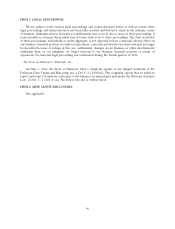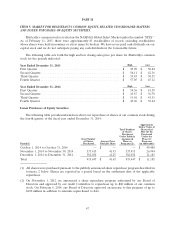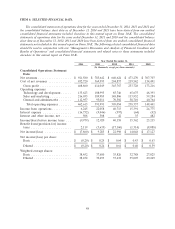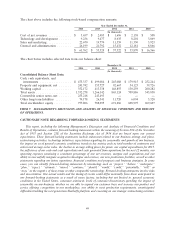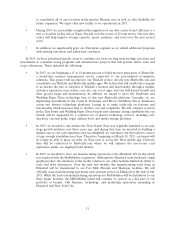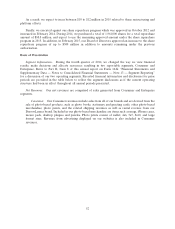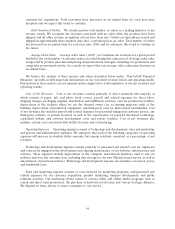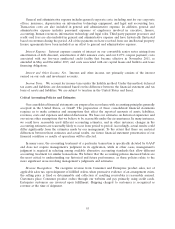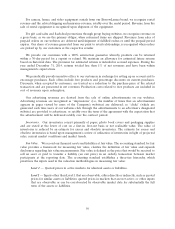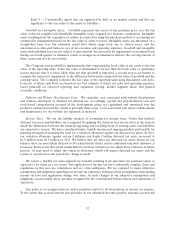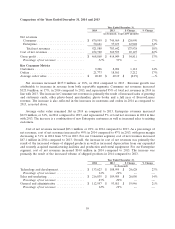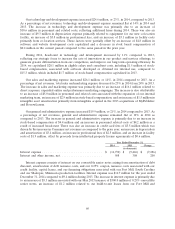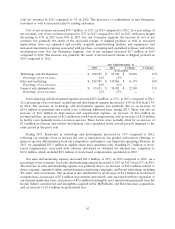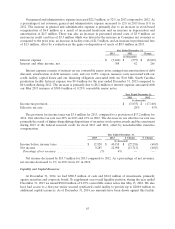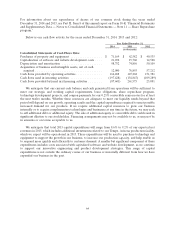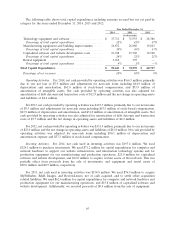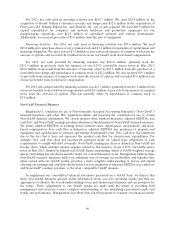Shutterfly 2014 Annual Report Download - page 57
Download and view the complete annual report
Please find page 57 of the 2014 Shutterfly annual report below. You can navigate through the pages in the report by either clicking on the pages listed below, or by using the keyword search tool below to find specific information within the annual report.For camera, lenses, and video equipment rentals from our BorrowLenses brand, we recognize rental
revenue and the related shipping and insurance revenue, ratably over the rental period. Revenue from the
sale of rental equipment is recognized upon shipment of the equipment.
For gift card sales and flash deal promotions through group buying websites, we recognize revenue on
a gross basis, as we are the primary obligor, when redeemed items are shipped. Revenues from sales of
prepaid orders on our websites are deferred until shipment of fulfilled orders or until the prepaid period
expires. Our share of revenue generated from our print to retail relationships, is recognized when orders
are picked up by our customers at the respective retailer.
We provide our customers with a 100% satisfaction guarantee whereby products can be returned
within a 30-day period for a reprint or refund. We maintain an allowance for estimated future returns
based on historical data. The provision for estimated returns is included in accrued expenses. During the
year ended December 31, 2014, returns totaled less than 1% of net revenues and have been within
management’s expectations.
We periodically provide incentive offers to our customers in exchange for setting up an account and to
encourage purchases. Such offers include free products and percentage discounts on current purchases.
Discounts, when accepted by customers, are treated as a reduction to the purchase price of the related
transaction and are presented in net revenues. Production costs related to free products are included in
cost of revenues upon redemption.
Our advertising revenues are derived from the sale of online advertisements on our websites.
Advertising revenues are recognized as ‘‘impressions’’ (i.e., the number of times that an advertisement
appears in pages viewed by users of the Company’s websites) are delivered; as ‘‘clicks’’ (which are
generated each time users of our websites click through the advertisements to an advertiser’s designated
website) are provided to advertisers; or ratably over the term of the agreement with the expectation that
the advertisement will be delivered ratably over the contract period.
Inventories. Our inventories consist primarily of paper, photo book covers and packaging supplies
and are stated at the lower of cost on a first-in, first-out basis or net realizable value. The value of
inventories is reduced by an estimate for excess and obsolete inventories. The estimate for excess and
obsolete inventories is based upon management’s review of utilization of inventories in light of projected
sales, current market conditions and market trends.
Fair Value. We record our financial assets and liabilities at fair value. The accounting standard for fair
value provides a framework for measuring fair value, clarifies the definition of fair value and expands
disclosures regarding fair value measurements. Fair value is defined as the price that would be received to
sell an asset or paid to transfer a liability (an exit price) in an orderly transaction between market
participants at the reporting date. The accounting standard establishes a three-tier hierarchy, which
prioritizes the inputs used in the valuation methodologies in measuring fair value:
Level 1 — Quoted prices in active markets for identical assets or liabilities.
Level 2 — Inputs other than Level 1 that are observable, either directly or indirectly, such as quoted
prices for similar assets or liabilities; quoted prices in markets that are not active; or other inputs
that are observable or can be corroborated by observable market data for substantially the full
term of the assets or liabilities.
56


